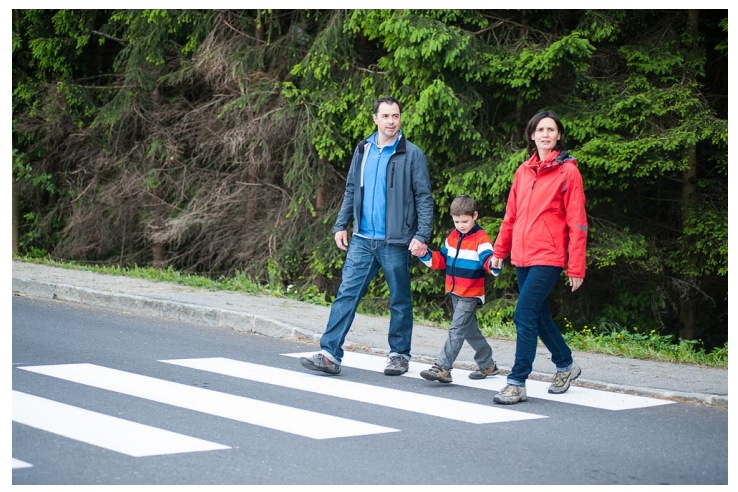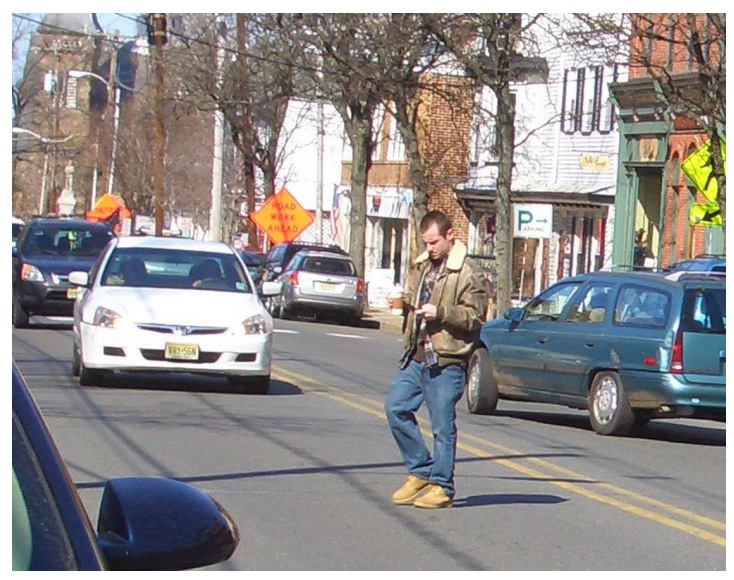GOVERNORS HIGHWAY SAFETY ASSOCIATION
Introduction
Everyone is a pedestrian. Whether you drive a car, ride a bicycle or take a bus to school, work, shop or play, your journey always begins and ends on foot. While we continue to ponder the age old question, What came first, the chicken or the egg?, when it comes to mobility there is no doubt our feet preceded the wheel.
 The invention of the automobile and completion of the U.S. highway system provided Americans the means to go anywhere, anytime, sparking a significant decline in walking. Between 1980 and 2010, commuting by foot dropped 50% (American Association of Highway Safety Officials [AASHTO], 2015). This uptick in motor vehicle travel has come at a price – thousands of deaths annually involving not only motorists and their passengers, but also pedestrians.
The invention of the automobile and completion of the U.S. highway system provided Americans the means to go anywhere, anytime, sparking a significant decline in walking. Between 1980 and 2010, commuting by foot dropped 50% (American Association of Highway Safety Officials [AASHTO], 2015). This uptick in motor vehicle travel has come at a price – thousands of deaths annually involving not only motorists and their passengers, but also pedestrians.
The good news is that pedestrian fatalities in the U.S. have fallen sharply – from 7,516 in the mid-1970s, to 4,735 in 2013, a 37% decline. A closer look at the numbers, however, reveals a troubling trend. Pedestrians accounted for 17% of all motor vehicle fatalities in the late 1970s and 1980s. That rate fell to 13% to 14% between 1989 and 1998, and 11% to 12% through the 2000s. However, the rate changed course between 2010 and 2013, climbing back to 14% (Williams, 2015). Equally concerning is the fact that one pedestrian was killed every two hours and injured every eight minutes in motor vehicle crashes in 2013 (National Highway Traffic Safety Administration [NHTSA], 2015a).
Ensuring the safety of all roadway users is paramount; particularly when you consider that everyone walks. The renewed focus on encouraging walking over driving for both environmental and health reasons also points to the need to make pedestrian safety a priority. As more and more communities recognize the positive impact walkable neighborhoods, downtowns and entire communities have on property values, jobs, tourism, and local spending, the ability to walk safely takes on a new level of importance. Add to that a potential cost savings of approximately $26 billion annually (based on 2012 U.S. pedestrian injury and fatality data) if pedestrian fatalities and injuries are prevented, and the safety of people on foot is literally an economic engine (National Safety County as cited by Pedestrian & Bicycle Information Center, 2014).
 According to both the U.S. Census and National Household Travel Survey, which measures walking to and from work, the historical decline in walk commuting levels appears to have ended and stabilized (AASHTO, 2015). On the flip side, an analysis of census data found that commuting by car declined from 88% in 2000 to 86% between 2010 and 2013, a small but noteworthy change. The declines are most dramatic in urban areas, while only three states – Louisiana, North Dakota and South Dakota – experienced increases (Harrison, 2014).
According to both the U.S. Census and National Household Travel Survey, which measures walking to and from work, the historical decline in walk commuting levels appears to have ended and stabilized (AASHTO, 2015). On the flip side, an analysis of census data found that commuting by car declined from 88% in 2000 to 86% between 2010 and 2013, a small but noteworthy change. The declines are most dramatic in urban areas, while only three states – Louisiana, North Dakota and South Dakota – experienced increases (Harrison, 2014).
Most of us correctly assume that people who walk to work tend to be in highly urbanized areas such as Washington, D.C. and New York. But surprisingly, they are also in states like Alaska, Vermont and Montana. Walking mode share, not unexpectedly, is also high in university towns and small to moderate-sized communities such as State College, Pennsylvania (9.24%) and Iowa City, Iowa (8.34%). In fact, the walk share in these same areas surpasses the New York-Northern New Jersey-Long Island metropolitan area (5.94%), where transit users are likely to begin and end their trip on foot (AASHTO, 2015).
Pedestrian injuries and fatalities, however, are more likely to occur in urban rather than rural areas. For example, in 2013 pedestrians accounted for 45% of all motor vehicle fatalities in Washington, D.C., but just 0.7% in North Dakota. Total pedestrian fatalities in 2013 were highest in the large and densely populated states of California (701), Florida (501) and Texas (480). But an examination of the pedestrian fatality rate per 100,000 population reveals that Delaware, which accounts for just .002% of the nation’s population, surpasses all other states at 2.70. Simply put, no state is immune from the potential conflict that can occur when people walking, biking and driving share the road. Add in distraction, which new research suggests is an issue for all roadway users, and the issue becomes even more problematic and complex.
Download full version (PDF): Everyone Walks
About the Governors Highway Safety Association
www.ghsa.org
Through GHSA leadership, partnerships and advocacy, States and Territories move toward zero deaths on the nation’s roadways…GHSA provides leadership and advocacy for the States and Territories to improve traffic safety, influence national policy, enhance program management and promote best practices.
Tags: Bicycling, Cycling, GHSA, Governors Highway Safety Association, Pedestrian, safety, State Farm






 RSS Feed
RSS Feed